Recovering from your workout begins the moment you end your last set, and it’s recovery, perhaps even more so than the workout itself, that is vital for making progress. If you blast several muscle groups in a workout, recovery actually begins during your workout, when you transition from one muscle group to another! As a matter of fact, recovering between sets dictates the nature of training stimulus, so recovery actually starts after your very first set.
The vital nature of recovery for making gains is why we’ve created Recovery: A precise combination of electrolytes, carbohydrates, essential amino acids (EAAs), and Sensoril® ashwagandha extract, to preserve and replenish precious muscle glycogen, and get an anabolic / anti-catabolic jump-start on recovering from your workouts.
To prepare for battle, a warrior arms himself before stepping on the battleGield. Therefore, we suggest you start consuming Recovery 10-15 minutes before and throughout your workout to enhance recovery from start to Ginish. And because these sessions can be brutal (and long), we’ve added the major electrolytes lost in sweat1 to help keep you well hydrated2,3. Additionally, electrolytes help with taste4, and we’ve balanced our Glavoring system with a variety of mineral salts to make sure Recovery tastes ridiculously good.
You’d be mistaken if you think we’ve just concocted a fruity drink you might sip on the beach. The meat n’ potatoes components of Recovery work their magic with carefully chosen carbohydrates, EAAs and one of the worlds best adaptogens:
When it comes down to it, making muscular gains is about going beyond simply recovery: Building muscle size, day by day, inch by inch, requires a net positive effect on muscle protein balance. Reducing muscle breakdown [probably by increasing insulin levels5,6] is one way that including carbs in your peri-workout7-10 recovery drink gets this done. Intra-workout carbs also reduce post-exercise cortisol11, a important predictor of muscle growth over the long haul12,13. Admittedly though, the science is a actually bit fuzzy as to the acute14,15 and long haul beneGits16 of peri-workout carbs for packing on size per se, but including carbs in a recovery drink primes your muscles for restoring glycogen17,18 (see Cyclic Dextrin® below) and there’s certainly no disadvantage to intra-workout carbohydrate19.
Before we get into the details of Recovery, be sure you don’t lose sight of the big picture when crafting your intra- and post-workout strategy. Intra-workout nutrition is just one piece of the puzzle: Substantial gains may very well mean consuming more carbohydrate and/or protein (and calories!) than subjects following most research protocols. For example, supersizing your post-workout carbohydrate (e.g., with 90-100g of carbs) may8 or may not20 inhibit protein breakdown. However, a glycogen-Gilled muscle cell is generally a more anabolic one7 and a brutal weight training workout dramatically elevates metabolic rate21,22, and can even temporarily prohibit glycogen replenishment despite eating a high carbohydrate diet23. This may be why one study found that hard training plus massive (>350g) carbohydrate supplementation (even without additional protein!) produces substantial gains in muscle mass without increased body fat24.
Obviously protein has its role, too. While consuming more than ~40g of post- workout protein may not further increase protein synthesis25-27, doubling this amount28,29!] creates the positive protein balance we want by blunting protein breakdown. While adding more and more protein to the diet beyond a certain point30,31 isn’t a magic bullet for building more muscle, there is also little risk of adverse health effects or gaining body fat from simply from eating large amounts of protein32-34.
Given the above, we’ve created Recovery as a way to jumpstart a recovery strategy based on a sound diet replete with carbs, protein, and calories.
Recovery contains highly branched cyclic dextrin (as 15 grams of Cyclic Dextrin®) to enhance gastric emptying35 and minimize gastrointestinal discomfort during exercise [including burping and gas, which your training partner beneGit will appreciate36]. By more rapidly ushering glucose from the stomach37,38 to the small intestine and blood stream39, Cyclic Dextrin® can improve performance40-42, and maintain higher glycogen levels43, giving you a head start on recovering for your next workout44.
To ensure sustained blood glucose during your workout, we’ve also included 5 grams of Isomaltulose (as Palatinose®), a disaccharide that produces a steady blood glucose, much lower than even table sugar45.
N-Acetyl L-Tyrosine is Recovery’s soluble source of L-tyrosine46-48, a precursor for catecholamine synthesis (e.g., noradrenaline and dopamine)49-51, thus supporting brain neurotransmitter levels52 and cognitive performance53,54. When under duress (e.g., during a killer workout), tyrosine supplementation may actually promote the aggressive mentality55 needed to drive through previous performance barriers.
We included the Essential Amino Acids (EAAs) because it’s the dietarily essential [not the non-essential56] amino acids that trigger muscle protein synthesis57-59. Leucine (3g) sits atop this EAA stack because of it’s primacy in triggering protein anabolism60-62. We were sure to focus on the other branched chain aminos (BCAAs; Isoleucine and Valine at 1.5g each) as well, because the BCAAs are known to reduce muscle breakdown and post-exercise soreness and damage63,64.
The other EAAs blended in the Recovery are based on the anabolic EAA mixture used extensively in research57,65-68, adjusted slightly to take advantage of the anabolic signaling61 and insulin-releasing69 effects of lysine and phenylalanine.
A successful training and diet cycle takes weeks of committed and continuous effort. Nobody wants to be a Glash in the pan, so to speak, so we’ve included ashwagandha (Withania somnifera extract; 125mg of Sensoril® stardardized for withanolide glycoside conjugates, oligosachharides and withaferin A) to ensure Recovery has keep you adapting long after your workout. Also known as Indian ginseng, ashwagandha is an “adaptogenic” herb that’s been used for centuries in Ayurveda and traditional Indian medicine to relieve stress, promote vitality70, enhance adaptation and normalize physiological function71-73.
The age-old hype about ashwagandha’s effects may just be real, going by the small but growing body of Western scientiGic literature. In rodent research, this herb appears to be both anabolic to skeletal muscle74 and anti-arthritic75. In men supplementing for approximately 2 months, ashwagandha can elevate testosterone, luteinizing hormone and antioxidant status, all the while improving sperm count, motility and metabolism76-78. Ashwagandha has also relieved fatigue and improved qualify of life of women undergoing breast cancer chemotherapy79. Extract from this adaptogenic plant has also been shown to reduce cortisol, resting blood pressure and anxiety70, and even have cognition-enhancing, nootropic actions80,81 – exactly what you need when “diet brain” catches up to you.
The science is starting to unveil Ashwagandha’s incredible promise as an ergogenic aid, as well. Supplementing with 1000mg of extract / day (8 weeks) enhanced performance and aerobic power in hard-training endurance cyclists82, and half that daily dose improved both aerobic, anaerobic and muscular power in college students who were not even engaged in a training program. Most impressively and important for physique athletes, a recent study found that men consuming only 300mg ashwagandha extract twice per day grew more muscle, gained more strength and lost more body fat that those taking a placebo, probably because the herb enhanced muscular recovery (reduced muscle damage) and increased testosterone83. (What more could you ask for?…)
Mix one scoop (33.4g) into 12-16 ounces of water and shake or stir. Start consuming 5-10 min prior to training, and sip on it during training. As always, for stronger and sweet flavor use less water and for weaker use more water. Adjust to the way you like and enjoy.
1. Sawka MN, Burke LM, Eichner ER, Maughan RJ, Montain SJ, Stachenfeld NS. American College of Sports Medicine position stand. Exercise and Gluid replacement. Med Sci Sports Exerc. 2007;39(2):377-390.
2. Maughan RJ, Owen JH, Shirreffs SM, Leiper JB. Post-exercise rehydration in man: effects of electrolyte addition to ingested Gluids. Eur J Appl Physiol Occup Physiol. 1994;69(3):209-215.
3. James LJ, Shirreffs SM. Effect of electrolyte addition to rehydration drinks consumed after severe Gluid and energy restriction. J Strength Cond Res. 2015;29(2):521-527.
4. Leiper JB. Fate of ingested Gluids: factors affecting gastric emptying and intestinal absorption of beverages in humans. Nutr Rev. 2015;73 Suppl 2:57- 72.
5. Bird SP, Tarpenning KM, Marino FE. Effects of liquid carbohydrate/essential amino acid ingestion on acute hormonal response during a single bout of resistance exercise in untrained men. Nutrition. 2006;22(4):367-375.
6. Biolo G, Williams BD, Fleming RY, Wolfe RR. Insulin action on muscle protein kinetics and amino acid transport during recovery after resistance exercise. Diabetes. 1999;48(5):949-957.
7. Howarth KR, Phillips SM, MacDonald MJ, Richards D, Moreau NA, Gibala MJ. Effect of glycogen availability on human skeletal muscle protein turnover during exercise and recovery. J Appl Physiol. 2010;109(2):431-438.
8. Borsheim E, Cree MG, Tipton KD, Elliott TA, Aarsland A, Wolfe RR. Effect of carbohydrate intake on net muscle protein synthesis during recovery from resistance exercise. J Appl Physiol. 2004;96(2):674 – 678.
9. Miller SL, Tipton KD, Chinkes DL, Wolf SE, Wolfe RR. Independent and combined effects of amino acids and glucose after resistance exercise. Med Sci Sports Exerc. 2003;35(3):449 – 455.
10. Roy BD, Tarnopolsky MA, MacDougall JD, Fowles J, Yarasheski KE. Effect of glucose supplement timing on protein metabolism after resistance training. Journal of applied physiology (Bethesda, Md. : 1985). 1997;82(6):1882-1888.
11. Bird SP, Tarpenning KM, Marino FE. Liquid carbohydrate/essential amino acid ingestion during a short-term bout of resistance exercise suppresses myoGibrillar protein degradation. Metabolism. 2006;55(5):570-577.
12. Tarpenning KM, Wiswell RA, Hawkins SA, Marcell TJ. InGluence of weight training exercise and modiGication of hormonal response on skeletal muscle growth. J Sci Med Sport. 2001;4(4):431-446.
13. Bird SP, Tarpenning KM, Marino FE. Independent and combined effects of liquid carbohydrate/essential amino acid ingestion on hormonal and muscular adaptations following resistance training in untrained men. Eur J Appl Physiol. 2006;97(2):225-238.
14. Hamer HM, Wall BT, Kiskini A, et al. Carbohydrate co-ingestion with protein does not further augment post-prandial muscle protein accretion in older men. Nutr Metab (Lond). 2013;10.
15. Staples AW, Burd NA, West DW, et al. Carbohydrate does not augment exercise-induced protein accretion versus protein alone. Med Sci Sports Exerc. 2011;43(7):1154-1161.
16. Hulmi JJ, Laakso M, Mero AA, Häkkinen K, Ahtiainen JP, Peltonen H. The effects of whey protein with or without carbohydrates on resistance training adaptations. Journal of the International Society of Sports Nutrition. 2015;12(1):48.
17. Beelen M, Burke LM, Gibala MJ, van Loon LJ. Nutritional strategies to promote postexercise recovery. Int J Sport Nutr Exerc Metab. 2010;20(6):515-532.
18. Ivy JL, Ding Z, Hwang H, Cialdella-Kam LC, Morrison PJ. Post exercise carbohydrate-protein supplementation: phosphorylation of muscle proteins involved in glycogen synthesis and protein translation. Amino Acids. 2008;35(1):89-97.
19. Witard OC, Cocke TL, Ferrando AA, Wolfe RR, Tipton KD. Increased net muscle protein balance in response to simultaneous and separate ingestion of carbohydrate and essential amino acids following resistance exercise. Appl Physiol Nutr Metab. 2014;39(3):329-339.
20. Glynn EL, Fry CS, Drummond MJ, et al. Muscle protein breakdown has a minor role in the protein anabolic response to essential amino acid and carbohydrate intake following resistance exercise. Am J Physiol Regul Integr Comp Physiol. 2010;299(2):R533 – 540.
21. Schuenke MD, Mikat RP, McBride JM. Effect of an acute period of resistance exercise on excess post-exercise oxygen consumption: implications for body mass management. Eur J Appl Physiol. 2002;86(5):411-417.
22. Paoli A, Moro T, Marcolin G, et al. High-Intensity Interval Resistance Training (HIRT) inGluences resting energy expenditure and respiratory ratio in non- dieting individuals. Journal of Translational Medicine. 2012;10:237.
23. Zehnder M, Muelli M, Buchli R, Kuehne G, Boutellier U. Further glycogen decrease during early recovery after eccentric exercise despite a high carbohydrate intake. Eur J Nutr. 2004;43(3):148-159.
24. Rozenek R, Ward P, Long S, Garhammer J. Effects of high-calorie supplements on body composition and muscular strength following resistance training. J Sports Med Phys Fitness. 2002;42(3):340-347.
25. Witard OC, Jackman SR, Breen L, Smith K, Selby A, Tipton KD. MyoGibrillar muscle protein synthesis rates subsequent to a meal in response to increasing doses of whey protein at rest and after resistance exercise. The American Journal of Clinical Nutrition. 2014;99(1):86-95.
26. Moore DR, Robinson MJ, Fry JL, et al. Ingested protein dose response of muscle and albumin protein synthesis after resistance exercise in young men. The American journal of clinical nutrition. 2009;89(1):161-168.
27. Symons TB, ShefGield-Moore M, Wolfe RR, Paddon-Jones D. A moderate serving of high-quality protein maximally stimulates skeletal muscle protein
synthesis in young and elderly subjects. J Am Diet Assoc. 2009;109(9):1582-
1586.
28. Kim I-Y, Schutzler S, Schrader A, et al. The anabolic response to a meal
containing different amounts of protein is not limited by the maximal stimulation of protein synthesis in healthy young adults. American Journal of Physiology – Endocrinology and Metabolism. 2015;310(1):E73-E80.
29. Deutz NE, Wolfe RR. Is there a maximal anabolic response to protein intake with a meal? Clin Nutr. 2013;32(2):309-313.
30. Cermak NM, Res PT, de Groot LC, Saris WH, van Loon LJ. Protein supplementation augments the adaptive response of skeletal muscle to resistance-type exercise training: a meta-analysis. Am J Clin Nutr. 2012;96(6):1454-1464.
31. Schoenfeld BJ, Aragon AA, Krieger JW. The effect of protein timing on muscle strength and hypertrophy: a meta-analysis. J Int Soc Sports Nutr. 2013;10(1):53.
32. Antonio J, Ellerbroek A, Silver T, et al. A high protein diet (3.4 g/kg/d) combined with a heavy resistance training program improves body composition in healthy trained men and women – a follow-up investigation. Journal of the International Society of Sports Nutrition. 2015;12(1):39.
33. Antonio J, Ellerbroek A, Silver T, Vargas L, Peacock C. The effects of a high protein diet on indices of health and body composition – a crossover trial in resistance-trained men. J Int Soc Sports Nutr. 2016;13:3.
34. Antonio J, Ellerbroek A, Silver T, et al. A High Protein Diet Has No Harmful Effects: A One-Year Crossover Study in Resistance-Trained Males. Journal of Nutrition and Metabolism. 2016;2016.
35. Takii H, Takii Nagao Y, Kometani T, et al. Fluids containing a highly branched cyclic dextrin inGluence the gastric emptying rate. Int J Sports Med. 2005;26(4):314-319.
36. Takii H, Kometani T, Nishimura T, Kuriki T, Fushiki T. A Sports Drink Based on Highly Branched Cyclic Dextrin Generates Few Gastrointestinal Disorders in Untrained Men during Bicycle Exercise. Food Science and Technology Research. 2004;10(4):428-431.
37. Kim C, Okabe T, Sakurai M, et al. Gastric emptying of a carbohydrate- electrolyte solution in healthy volunteers depends on osmotically active particles. Journal of Nippon Medical School = Nippon Ika Daigaku zasshi. 2013;80(5):342-349.
38. Nakamura M, Uchida K, Akahane M, Watanabe Y, Ohtomo K, Yamada Y. The effects on gastric emptying and carbohydrate loading of an oral nutritional supplement and an oral rehydration solution: a crossover study with magnetic resonance imaging. Anesthesia and analgesia. 2014;118(6):1268- 1273.
39. Jeukendrup AE. Carbohydrate and exercise performance: the role of multiple transportable carbohydrates. Curr Opin Clin Nutr Metab Care. 2010;13(4):452-457.
40. Takii H, Ishihara K, Kometani T, Okada S, Fushiki T. Enhancement of swimming endurance in mice by highly branched cyclic dextrin. Bioscience, biotechnology, and biochemistry. 1999;63(12):2045-2052.
41. Haff GG, Lehmkuhl MJ, McCoy LB, Stone MH. Carbohydrate supplementation and resistance training. Journal of strength and conditioning research / National Strength & Conditioning Association. 2003;17(1):187-196.
42. Haff GG, Schroeder CA, Koch AJ, Kuphal KE, Comeau MJ, Potteiger JA. The effects of supplemental carbohydrate ingestion on intermittent isokinetic leg exercise. The Journal of sports medicine and physical Yitness. 2001;41(2):216- 222.
43. Haff GG, Koch AJ, Potteiger JA, et al. Carbohydrate supplementation attenuates muscle glycogen loss during acute bouts of resistance exercise. Int J Sport Nutr Exerc Metab. 2000;10.
44. Kerksick C, Harvey T, Stout J, et al. International Society of Sports Nutrition position stand: nutrient timing. J Int Soc Sports Nutr. 2008;5:17.
45. O’Donnell K, Kearsley M. Sweeteners and sugar alternatives in food technology. 2nd Ed. John Wiley & Sons; 2012.
46. Magnusson I, Ekman L, Wangdahl M, Wahren J. N-acetyl-L-tyrosine and N- acetyl-L-cysteine as tyrosine and cysteine precursors during intravenous infusion in humans. Metabolism. 1989;38(10):957-961.
47. Hoffer LJ, Sher K, Saboohi F, Bernier P, et al. N-Acetyl-L-Tyrosine as a Tyrosine Source in Adult Parenteral Nutrition. JPEN, Journal of Parenteral and Enteral Nutrition. 2003;27(6):419-422.
48. Van Goudoever JB, Sulkers EJ, Timmerman M, et al. Amino Acid Solutions for Premature Neonates During the First Week of Life: The Role of N-Acetyl-L- Cysteine and N-Acetyl-L-Tyrosine. Journal of Parenteral and Enteral Nutrition. 1994;18(5):404-408.
49. Milner JD, Wurtman RJ. Tyrosine availability: a presynaptic factor controlling catecholamine release. Adv Exp Med Biol. 1987;221:211-221.
50. Melamed E, Glaeser B, Growdon JH, Wurtman RJ. Plasma tyrosine in normal humans: effects of oral tyrosine and protein-containing meals. J Neural Transm. 1980;47(4):299-306.
51. Lieberman HR. Tyrosine and Stress: Human and Animal Studies. In: Marriott BM, Institute of Medicine (U.S.). Committee on Military Nutrition Research., eds. Food components to enhance performance : an evaluation of potential performance-enhancing food components for operational rations. Washington, D.C.: National Academy Press; 1994:277.
52. Avraham Y, Hao S, Mendelson S, Berry EM. Tyrosine improves appetite, cognition, and exercise tolerance in activity anorexia. Med Sci Sports Exerc. 2001;33(12):2104-2110.
53. Attipoe SMA, Zeno SAMA, Lee CMA, et al. Tyrosine for Mitigating Stress and Enhancing Performance in Healthy Adult Humans, a Rapid Evidence Assessment of the Literature. Mil Med. 2015;180(7):754-765.
54. Deijen JB, Wientjes CJ, Vullinghs HF, Cloin PA, Langefeld JJ. Tyrosine improves cognitive performance and reduces blood pressure in cadets after one week of a combat training course. Brain research bulletin. 1999;48(2):203-209.
55. Lieberman HR, Thompson LA, Caruso CM, et al. The catecholamine neurotransmitter precursor tyrosine increases anger during exposure to severe psychological stress. Psychopharmacology (Berl). 2015;232(5):943- 951.
56. Tipton KD, Gurkin BE, Matin S, Wolfe RR. Nonessential amino acids are not necessary to stimulate net muscle protein synthesis in healthy volunteers. J Nutr Biochem. 1999;10(2):89-95.
57. Borsheim E, Tipton KD, Wolf SE, Wolfe RR. Essential amino acids and muscle protein recovery from resistance exercise. American journal of physiology. Endocrinology and metabolism. 2002;283(4):E648-657.
58. Volpi E, Kobayashi H, ShefGield-Moore M, Mittendorfer B, Wolfe RR. Essential amino acids are primarily responsible for the amino acid stimulation of muscle protein anabolism in healthy elderly adults. Am J Clin Nutr. 2003;78.
59. Smith K, Reynolds N, Downie S, Patel A, Rennie MJ. Effects of Glooding amino acids on incorporation of labeled amino acids into human muscle protein. Am J Physiol. 1998;275(1 Pt 1):E73-78.
60. Eriksson S, Hagenfeldt L, Wahren J. A comparison of the effects of intravenous infusion of individual branched-chain amino acids on blood amino acid levels in man. Clin Sci (Lond). 1981;60(1):95-100.
61. Atherton PJ, Smith K, Etheridge T, Rankin D, Rennie MJ. Distinct anabolic signalling responses to amino acids in C2C12 skeletal muscle cells. Amino acids. 2010;38(5):1533-1539.
62. Churchward-Venne TA, Burd NA, Mitchell CJ, et al. Supplementation of a suboptimal protein dose with leucine or essential amino acids: effects on myoGibrillar protein synthesis at rest and following resistance exercise in men. The Journal of physiology. 2012;590(Pt 11):2751-2765.
63. Shimomura Y, Inaguma A, Watanabe S, et al. Branched-chain amino acid supplementation before squat exercise and delayed-onset muscle soreness. International journal of sport nutrition and exercise metabolism. 2010;20(3):236-244.
64. Coombes JS, McNaughton LR. Effects of branched-chain amino acid supplementation on serum creatine kinase and lactate dehydrogenase after prolonged exercise. The Journal of sports medicine and physical Yitness. 2000;40(3):240-246.
65. Tipton KD, Borsheim E, Wolf SE, Sanford AP, Wolfe RR. Acute response of net muscle protein balance reGlects 24-h balance after exercise and amino acid ingestion. Am J Physiol Endocrinol Metab. 2003;284(1):E76-89.
66. Tipton KD, Rasmussen BB, Miller SL, et al. Timing of amino acid- carbohydrate ingestion alters anabolic response of muscle to resistance exercise. Am J Physiol Endocrinol Metab. 2001;281(2):E197-206.
67. Rasmussen BB, Wolfe RR, Volpi E. Oral and intravenously administered amino acids produce similar effects on muscle protein synthesis in the elderly. J Nutr Health Aging. 2002;6(6):358-362.
68. Rasmussen BB, Tipton KD, Miller SL, Wolf SE, Wolfe RR. An oral essential amino acid-carbohydrate supplement enhances muscle protein anabolism after resistance exercise. Journal of applied physiology. 2000;88(2):386-392.
69. Floyd JC, Jr., Fajans SS, Conn JW, Knopf RF, Rull J. Stimulation of insulin secretion by amino acids. J Clin Invest. 1966;45(9):1487-1502.
70. Auddy B, Hazra J, Mitra A, Abedon B, Ghosal S. A Standardized Withania Somnifera Extract SigniYicantly Reduces Stress-Related Parameters in Chronically Stressed Humans: A Double-Blind, Randomized, Placebo-Controlled Study. Vol 112008.
71. Sudha P, Reni A. 2 Ashwagandha. Leafy Medicinal Herbs: Botany, Chemistry, Postharvest Technology and Uses. 2016:19.
72. Winters M. Ancient medicine, modern use: Withania somnifera and its potential role in integrative oncology. Altern Med Rev. 2006;11(4):269-277.
73. Sandhya S, Sushil K. Withania somnifera: the Indian ginseng ashwagandha. Central Institute of Medicinal and Aromatic Plants; 1998.
74. Grandhi A, Mujumdar AM, Patwardhan B. A comparative pharmacological investigation of Ashwagandha and Ginseng. J Ethnopharmacol. 1994;44(3):131-135.
75. Rasool M, Varalakshmi P. Protective effect of Withania somnifera root powder in relation to lipid peroxidation, antioxidant status, glycoproteins and bone collagen on adjuvant-induced arthritis in rats. Fundam Clin Pharmacol. 2007;21(2):157-164.
76. Ahmad MK, Mahdi AA, Shukla KK, et al. Withania somnifera improves semen quality by regulating reproductive hormone levels and oxidative stress in seminal plasma of infertile males. Fertil Steril. 2010;94(3):989-996.
77. Gupta A, Mahdi AA, Shukla KK, et al. EfGicacy of Withania somnifera on seminal plasma metabolites of infertile males: a proton NMR study at 800 MHz. J Ethnopharmacol. 2013;149(1):208-214.
78. Ambiye VR, Langade D, Dongre S, Aptikar P, Kulkarni M, Dongre A. Clinical evaluation of the spermatogenic activity of the root extract of Ashwagandha (Withania somnifera) in oligospermic males: a pilot study. Evidence-Based Complementary and Alternative Medicine. 2013;2013.
79. Biswal BM, Sulaiman SA, Ismail HC, Zakaria H, Musa KI. Effect of Withania somnifera (Ashwagandha) on the development of chemotherapy-induced fatigue and quality of life in breast cancer patients. Integr Cancer Ther. 2013;12(4):312-322.
80. Shivamurthy S, Manchukonda RS, Ramadas D. Evaluation of learning and memory enhancing activities of protein extract of Withania somnifera (Ashwagandha) in Wistar albino rats. International Journal of Basic & Clinical Pharmacology. 2016;5(2):453-457.
81. Wadhwa R, Konar A, Kaul SC. Nootropic potential of Ashwagandha leaves: Beyond traditional root extracts. Neurochemistry international. 2016;95:109- 118.
82. Shenoy S, Chaskar U, Sandhu JS, Paadhi MM. Effects of eight-week supplementation of Ashwagandha on cardiorespiratory endurance in elite Indian cyclists. Journal of Ayurveda and Integrative Medicine. 2012;3(4):209- 214.
83. Wankhede S, Langade D, Joshi K, Sinha SR, Bhattacharyya S. Examining the effect of Withania somnifera supplementation on muscle strength and recovery: a randomized controlled trial. Journal of the International Society of Sports Nutrition. 2015;12:43.
KEEP OUT OF THE REACH OF CHILDREN. Store at room temperature, tightly closed. Avoid excessive heat. Some product clumping may occur.
These statements have not been evaluated by the Food and Drug Administration. This product is not intended to diagnose, treat, cure, or prevent any disease.
Disclaimer: L-Tyrosine may interact with certain drugs (such as MAOIs, Levodopa and thyroid medications).
These statements have not been evaluated by the Food and Drug Administration. This product is not intended to diagnose, treat, cure, or prevent any disease.
California Residents: Click here for Proposition 65 Warning
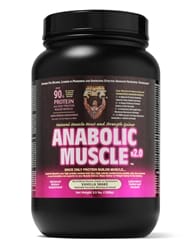
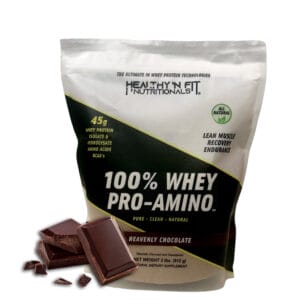
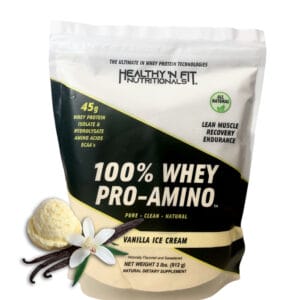
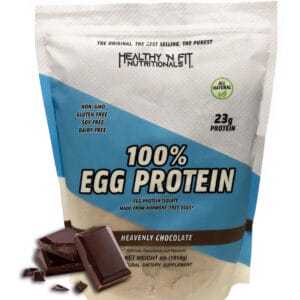
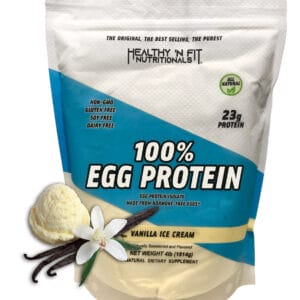
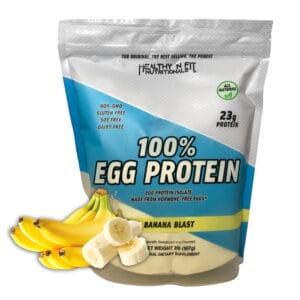
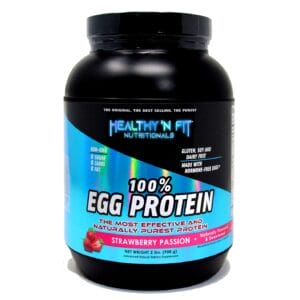
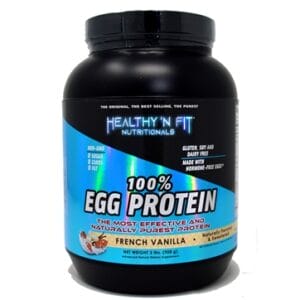
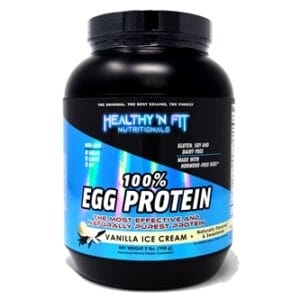
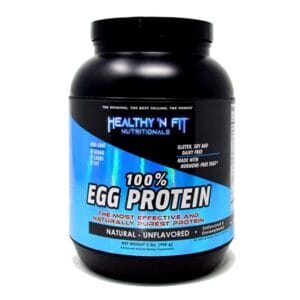
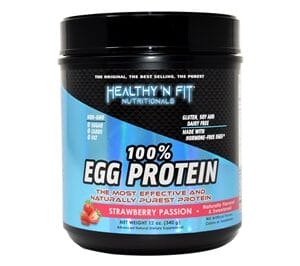
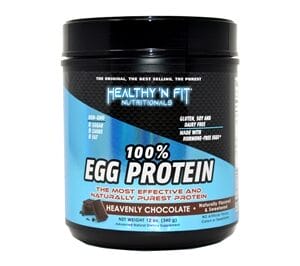
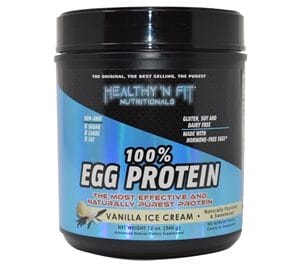
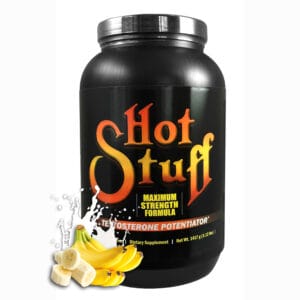
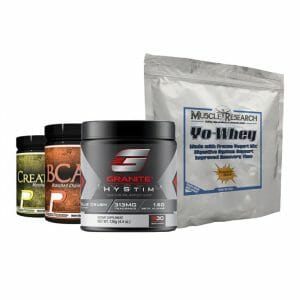
Reviews
There are no reviews yet